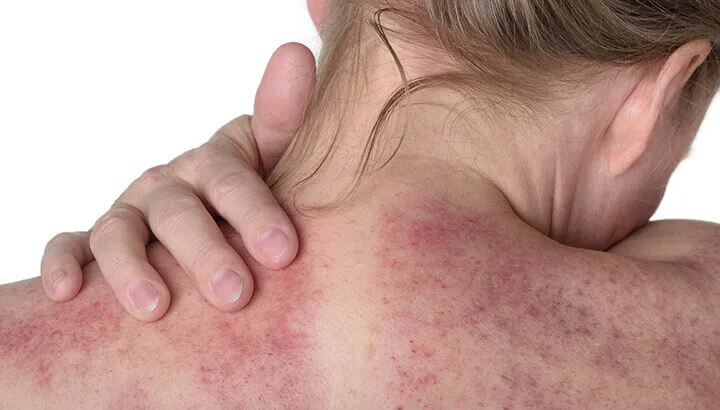It seems like you should avoid any type of treatment with “scraping” in the title, right? Wrong. According to traditional Chinese medicine, this is one type of massage you should get on board with, despite its scary name. Here’s everything you need to know about this unique muscle massage, the benefits of gua sha scraping and how to do it.
What is gua sha scraping used for?
Put simply, gua sha is a traditional Chinese treatment to raise stagnant blood to the surface of the skin. It involves scraping a certain area to produce light bruising. Traditionally, practitioners work on injured areas — such as the back — to stimulate blood flow and promote the healing process. Gua sha scraping is performed using an instrument with a smooth edge, be it a coin or animal bone.
Once the skin is well-oiled, the practitioner will place the smooth edge of the instrument onto the skin’s surface then “scrape” it along the acupuncture meridians in a repeated fashion. Each stroke is between four and six inches long, leaving a noticeable mark on the patient’s skin. When performed correctly, there is no bleeding from the technique — only bruising.
What are gua sha benefits?
Though there is a lack of solid scientific evidence on the benefits of gua sha scraping, it’s been used for centuries in Asia, India and other countries as a form of medicine. The repetitive movement in gua sha is said to increase circulation, which can provide anti-inflammatory, pain-relieving and immune-boosting effects.
In one study, researchers reviewed five randomized controlled trials (RCTs) comparing gua sha to acupuncture and two controlled clinical trials (CCTs) comparing gua sha with herbal injection, massage, electric current therapy or no treatment at all. Two RCTs suggested that gua sha was effective at pain reduction, but researchers noted that the quality of the studies were poor. One CCT reported that gua sha had beneficial effects on musculoskeletal pain but apparently the study had “low methodological quality.”
Pregnant women may have some good news, however. One study found that breast engorgement from breastfeeding may be controlled by gua sha scraping. “Our findings provided empirical evidence supporting that gua sha therapy may be used as an effective technique in the management of breast engorgement,” wrote the researchers. “By using gua sha therapy, nurses can handle breast engorgement problems more effectively in primary care and hence help patients both physically and psychologically.” Strange, but true!
Does gua sha hurt?

Despite its appearance, gua sha scraping isn’t supposed to hurt. The only time there would be pain associated with the treatment is if the skin isn’t properly lubricated or the practitioner isn’t using a proper instrument. If you feel any pain, speak up immediately. Otherwise, it’s a gentle sensation that looks worse than it feels.
Gua sha side effects
If all goes well, the slight bruising effect should disappear within 24 to 48 hours, depending on your lifestyle and overall health. On your face, it will likely disappear within a few minutes — but more on how to do that in a minute.
If you’re getting gua sha work done on your neck, make sure to be mindful of your breathing. In one report, a patient suffered from acute epiglottitis (inflammation of the throat) following gua sha treatment, which obstructed his airways. Though exceedingly rare, mistakes do happen. So before you go in for treatment, always do your research! Make sure you’re working with a practitioner you trust.
Gua sha for the face
If your face is looking a little puffy from stress, diet or lack of proper sleep, you can try this ancient technique on your facial skin at home, without the help of a Chinese medicine practitioner. It’s a more gentle version of what you’d receive on the massage table, but it’s said to clarify the complexion and rejuvenate the skin cells.
Here’s how to do it:
-
- Purchase a gua sha scraping tool. You can find them on Amazon.com or inside a health and wellness store.
- Moisturize the facial skin. We recommend using coconut oil for a healthy glow.
- Apply light pressure to the skin on your face. Make sure the tool is at a 15-degree angle (almost flat) to gently pull on the skin. If the skin starts to turn bright pink or red, you’re pressing too hard. Careful to avoid bruising!
- Work through different parts of your face. Make sure to cover your forehead, cheeks and chin, scraping in an outward motion or downward motion toward the collarbone.
Patients who should try gua sha
Gua sha may not work for everyone, but if you’re experiencing any of the following health issues, perhaps you should give it a try to see if it works for you:
- Headaches
- Chronic back pain
- Neck pain
- Sciatica
- Cold/flu
- Bronchitis
- Asthma
While there is limited scientific evidence of gua sha’s effectiveness, there must be a reason it’s been in use for centuries, right? As usual, perhaps these ancient cultures are onto something. So go ahead and try to scrape away the pain — you might just be surprised by the results!
— The Alternative Daily

